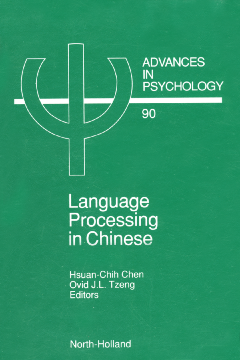
Additional Information
Book Details
Abstract
The aim of this book is to integrate the most recent research in the cognitive aspects of the Chinese language into a single academic reference for those interested in language processing and related fields. Chinese is perhaps the most widely used language in the world. In addition to its popularity, many specific features make it unique in relation to many Indo-European languages. Chinese words generally do not have inflections indicating grammatical attributes such as number, gender and case for nouns, or tense and aspect for verbs. Chinese words have no inherently marked lexical categories. Unlike the alphabetic symbols common to Indo-European languages, the Chinese writing system is logographic in nature. Chinese script/speech relationship is highly opaque, with the Chinese characters representing lexical morphemes in contrast to alphabetic symbols which represent phonemes. This volume presents research findings indispensable to the general understanding of human language processing about how people process the Chinese language.
